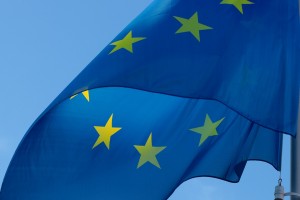Exciting news for European logistics. Last 7 January, the European Parliament and the European Council reached an agreement on the new Regulation establishing a European Maritime Single Window. This agreement is known by the initials EMSWe, which stand for “European Maritime Single Window environment”.
The single window is defined as a system that allows parties involved in trade and transport to file standardised information and documents with one sole entry point to meet all regulatory requirements related to importation, exportation and transit. In practise, this eliminates the obligation of filling out the same documentation upon arriving at each port along the route.
The EU’s new maritime single window environment is focused on customs procedures, but its objective is more ambitious. The idea is to facilitate filing information required by both customs and non-customs law for logistical operators when transporting EU goods across borders.
Digitisation and centralisation
To guarantee competitiveness and efficiency in European maritime transport, it became necessary to reduce the administrative burden on ships and centralise procedures to improve efficiency and environmental sustainability for maritime transport, while contributing to the sector’s integration in the multi-modal digital logistical chain.
However, the particularity is not only centralisation, but also digitisation. Thus, if the information is transferred to an electronic platform, the data need only be sent once, avoiding duplicates and unnecessary copies. In this way, technological progress is coming to European logistics to eliminate cumbersome bureaucratic hurdles that unnecessarily complicated commercial transactions.
History of the European Maritime Single Window
This transition toward digitisation for customs procedures in maritime transport began in October 2010 with Directive 2010/65, Reporting Formalities Directive (RFD). Its aim was to simplify administrative procedures by obliging member states to create a national single window (NSW) for all information from ships reaching and exiting ports.
This directive already stipulated electronically sending information once to report to different authorities. Many hopes were placed in this directive, worked on by expert groups to simplify maritime administrative procedures and electronic information services with the participation of national maritime administrations, transport professionals, customs and border control to help define the single window in practise.
However, in 2016, the European Commission concluded in a study that the RFD’s objectives were not met. In addition to other aspects, the use of paper reports still existed at over 50% of ports, with digitisation only reaching certain EU countries. In fact, the single window is only available in a few EU countries. As if this weren’t enough, harmonisation through Europe has scarcely made progress, since the NSW implemented in each country is different.
Therefore, out of the good intentions behind the National Single Window project, the positive impact on the maritime transport industry is low. This is the situation that the EMSWe seeks to drastically turn around, beginning by harmonising the national single windows already in existence.
ESPO reception
The European Seaport Organisation (ESPO) has welcomed the agreement with satisfaction. In the words of secretary general Isabelle Ryckbost, it entails “real progress for the maritime and logistical sector” and a clear commitment “in favour of administrative simplification and a more efficient supply chain”. Ryckbost also highlighted the digitisation agenda of many European ports, in line with the agreement’s objectives.
The agreement reached for the EMSWe must still be thoroughly formalised by the European Council and Parliament, and its application is expected beginning in 2025 (six years after coming in force).


